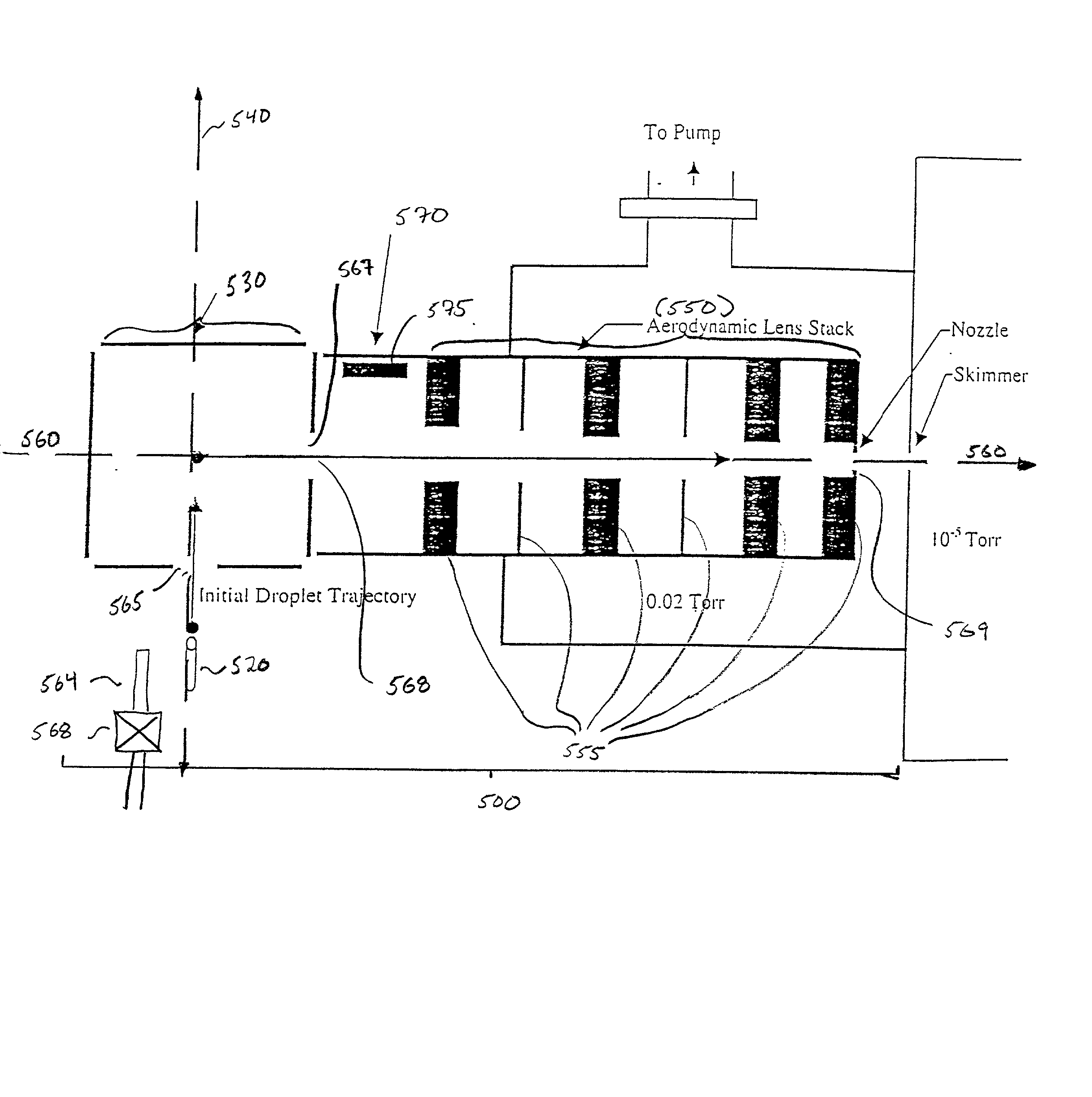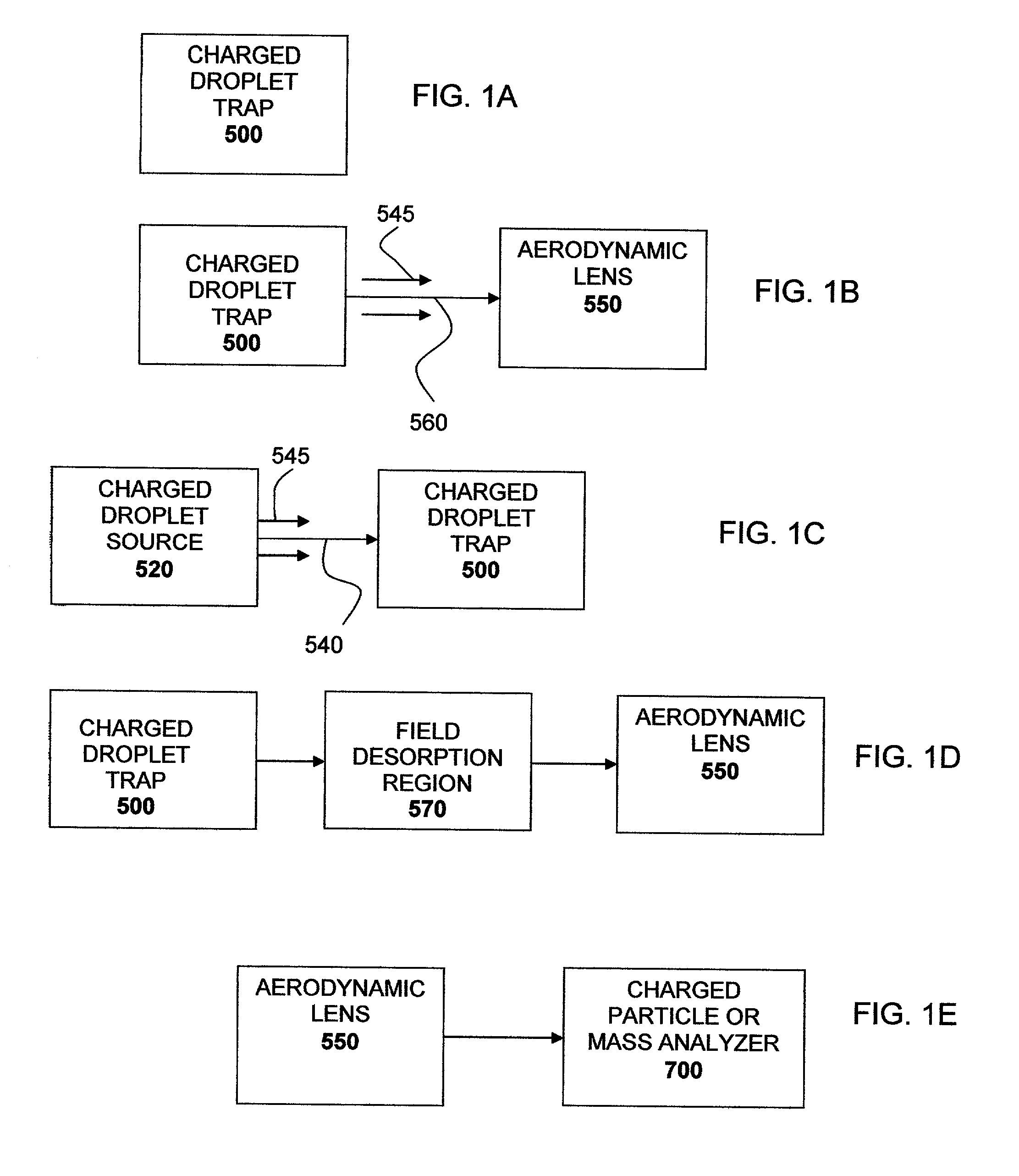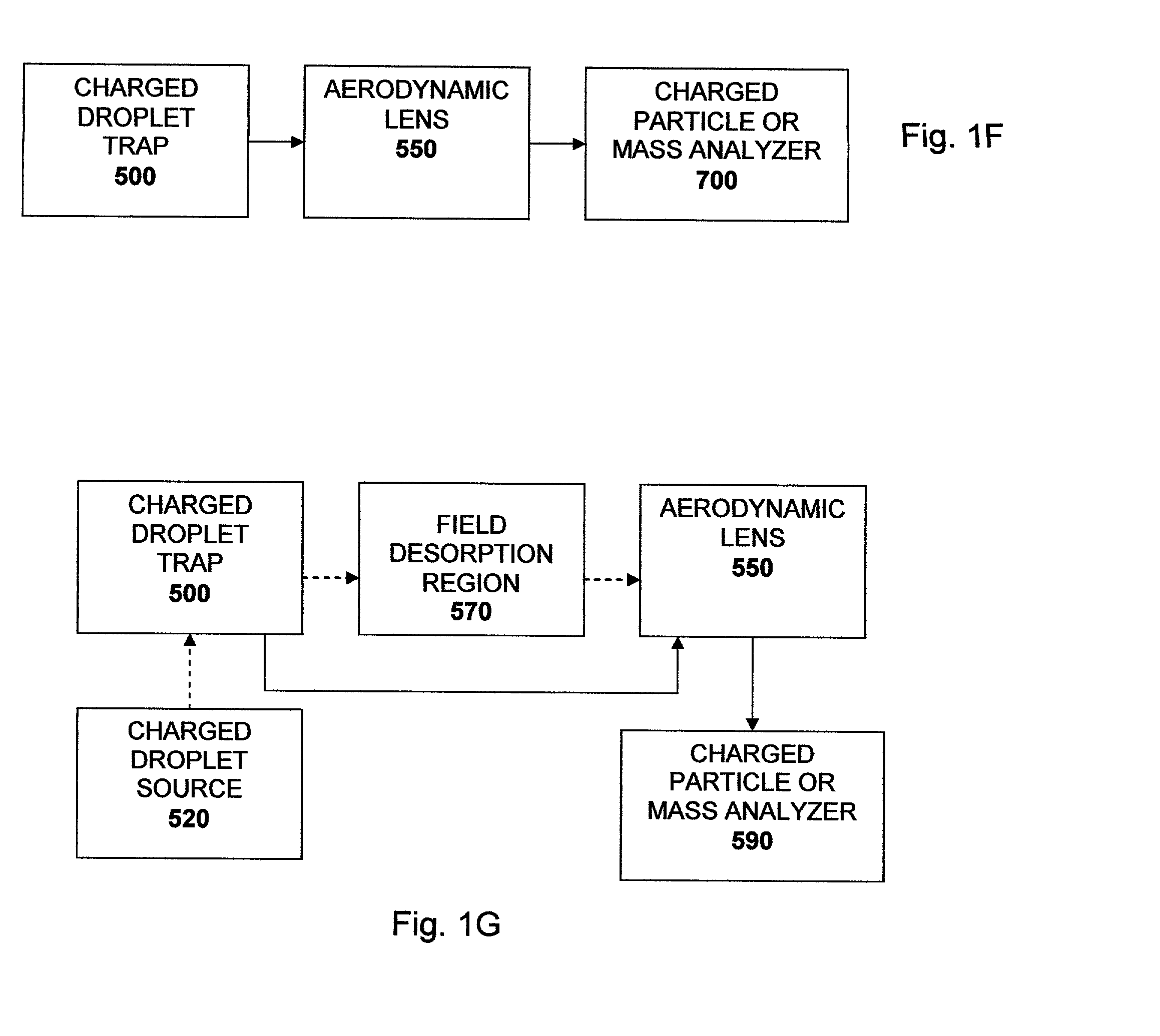While mass spectrometry provides a highly effective means of identifying a wide class of molecules, its use for analyzing high molecular weight compounds is hindered by problems related to generating, transmitting and detecting
gas phase analyte ions of these species.
First, analysis of important biological compounds, such as oligonucleotides and oligopetides, by
mass spectrometric methods is severely limited by practical difficulties related to low sample volatility and undesirable fragmentation during
vaporization and
ionization processes.
Second, many important biological application require ultra-high detection sensitivity and resolution that is currently unattainable using conventional
mass spectrometric techniques.
As a result of these fundamental limitations, the potential for quantitative analysis of samples containing biopolymers remains largely unrealized.
For example, the analysis of complex mixtures of oligonucleotides produced in enzymatic
DNA sequencing reactions is currently dominated by time-consuming and labor-intensive
electrophoresis techniques that may be complicated by secondary structure.
The primary limitation hindering the application mass spectrometry to the field of
DNA sequencing is the limited mass range accessible for the analysis of nucleic acids.
In addition to
DNA sequencing applications, current mass spectrometric techniques lack the ultra high sensitivity required for many other important biomedical applications.
For example, the sensitivity needed for
single cell analysis of
protein expression and post-translational modification patterns via mass spectrometric analysis is simply not currently available.
Further, such applications of mass spectrometric analysis necessarily require cumbersome and complex separation procedures prior to
mass analysis.
Significantly, all ion sources currently available for preparation of
gas phase ions from large biomolecules result in large ion losses during transmission and
mass analysis process.
Conventional ion preparation methods for mass spectrometric analysis have proven unsuitable for high molecular compounds.
Vaporization by sublimation or
thermal desorption is unfeasible for many high molecular weight species, such as biopolymers, because these compounds tend to have negligibly low vapor pressures.
Although conventional ion
desorption methods, such as
plasma desorption,
laser desorption, fast particle bombardment and thermospray
ionization, are more applicable to nonvolatile compounds, these methods have substantial problems associated with ion fragmentation and low
ionization efficiencies for compounds with molecular masses greater than about 2000 Daltons.
Although MALDI is able to generate gas phase
analyte ions from very high molecular weight compounds (>2000 Daltons), certain aspects of this ion preparation method limit its utility in analyzing complex mixtures of biomolecules.
First, fragmentation of
analyte molecules during
vaporization and ionization gives rise to very complex mass spectra of parent and fragment peaks that are difficult to assign to individual components of a complex mixture.
Second, the sensitivity of the technique is dramatically affected by
sample preparation methodology and the surface and bulk characteristics of the site irradiated by the
laser.
As a result, MALDI analysis yields little quantitative information pertaining to the concentrations of the materials analyzed.
Certain aspects of ESI, however, currently prevent this ion generating method from achieving its full potential in the analysis complex mixtures of biomolecules.
These spectra often possess too many overlapping peaks to permit effective discrimination and identification of the various components of a complex mixture.
In addition, highly charged gas phase ions are often unstable and fragment prior to detection, which further increases the complexity of ESI-MS spectra.
Second, a large percentage of ions formed by
electrospray ionization are lost during transmission into and through the
mass analyzer.
Many of these losses can be attributed to
divergence in the
stream of ions generated.
This mutual charge repulsion significantly widens the
spatial distribution of the droplet and / or gas phase ion
stream and causes significant deviation from the centerline of the mass
spectrometer.
In addition, spread in ion position is also detrimental to the resolution of the mass determination.
Divergence of the gas phase ion
stream is a major source of deviations in ion start position and, hence, degrades the resolution attainable in the time-of-flight analysis of ions generated by ESI.
Typically, small entrances apertures for orthogonal extraction are employed to compensate for these deviations, which ultimately result in a substantial decrease in detection sensitivity.
Finally, ESI, as a continuous ionization source, is not directly compatible with time-of-flight
mass analysis.
Although ions are generated continuously in ESI-TOF, mass analysis by orthogonal extraction is limited by the
duty cycle of the extraction pulse.
Therefore, the majority of ions formed in ESI-TOF are never actually mass analyzed or detected because ion production is not synchronized with detection.
Finally, the apparatus described by Hager et al. is not amenable to single droplet production or discretely controlled droplet formation because it employs a continuous droplet source which utilizes Rayleigh
breakup of a
liquid jet that in not capable of discrete pulsed droplet generation.
While Feng et al. were able to direct the exit of the parent and
daughter droplets out of the electrodynamic trap, they report very poor
ion transfer efficiency to the
vacuum chamber.
While electrostatic ion lens may be employed to collimate or focus a diverging
ion beam, most lens systems exhibit aberrations, which minimize the optimum focus conditions to a narrow
mass to charge ratio (m / z) window over a limited energy range.
In addition, ions that are brought to a focus via an
electrostatic lens quickly diverge once past the focal point and, thus, ultimately may not be transmitted and detected.
Additionally, the authors do not report use of the aerodynamic lens
system for sampling in mass analysis.
This
shock wave results in a pressure fluctuation in the liquid sample that generates primary electrically charged droplets.
However, due to inertial effects, the particle will not follow the streamline perfectly as it contracts to pass through aperture (650).
 Login to View More
Login to View More  Login to View More
Login to View More 


